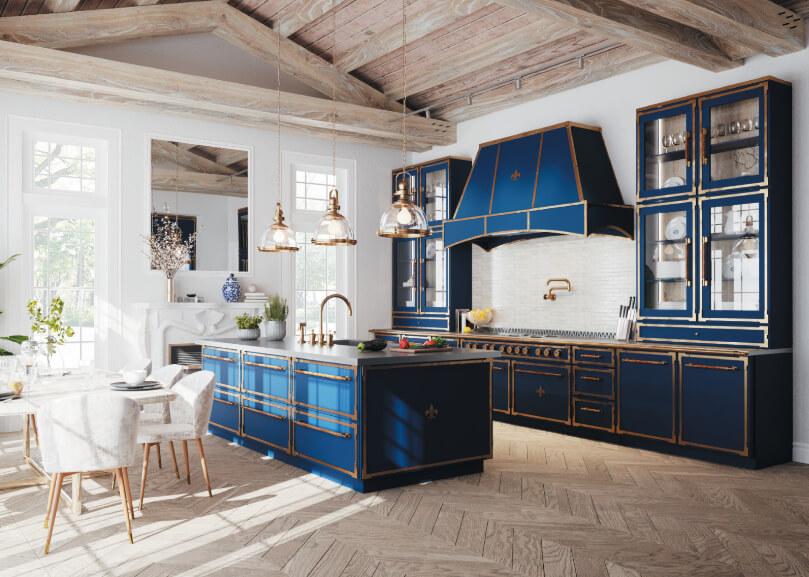
3D vs 2D Product Configurator: Time to Level Up
In this era of personalized and unique buying experiences, more and more customers, especially millennials, want to make more defined choices for their purchases.
Table of Contents
In this era of personalized and unique buying experiences, more and more customers, especially millennials, want to make more defined choices for their purchases.
A Deloitte research shows that over 50% of consumers prefer buying customized goods and services. But not only that—they’re willing to pay extra for it and be more actively involved in the creative process.
Still images and 2D product configurators do not provide the variety, visualization quality, and personalization available in 3D product configurators. Businesses that leverage this type of configurator can unlock tremendous benefits which include increasing sales volume, providing better user experiences, and higher ROI.
This raises the question, why are you still selling custom products without a 3D configurator?
The Downsides of a 2D Product Configurator
In general, enterprises with custom products look to boost sales, reduce return rates, and improve customer experiences across all their channels. Unfortunately, 2D product configurators still suffer from drawbacks that prevent this from happening. Some common problems with 2D product configurators include:
- Limited visualization quality: Relying on static 2D images prevents users from seeing your products and the different customizable selections in real-time, and from various angles. 2D configurators do not accurately reflect the product's actual appearance, potentially resulting in customer dissatisfaction, which can damage the reputation of the product and its brand.
- Higher margin for error: When consumers make customized selections with only 2D images and consultation with sales agents, there’s a higher potential for mistakes. Why? Because errors can occur when conveying preferences without having a clear idea of how the product will look in reality.
- High return rate: With little chance for personalization, customers are likely to be disappointed if the product fails to meet their expectations. And, when this happens, there's a higher chance of customers returning their purchase.

Perks of Using a 3D Product Configurator Over a 2D Product Configurator
3D product configurators offer several benefits over 2D configurators. By leveraging them, brands can discover new product initiatives, enhance the purchasing experience, reduce return rates, increase sales, and boost ROI.
The following are reasons why you should implement a 3D product configurator:
Better Product Visualizations
One of the marvels of 3D is its holistic, 360-degree, life-like design. Customers no longer have to wait to see what their custom products will look like. When buying a kitchen cabinet, for example, you don’t have to just choose between a handful of predefined sizes.
Instead, with a 3D product configurator, you can visualize the entire product from all angles as you make your selections. That way, customers can see different combinations, evaluate the custom configurations, get quoted on prices, and feel more satisfaction after buying.
Faster Sales Cycle
Businesses want to get products out as fast as possible. Also, they want to reduce the amount of manual overhead when selling these products. 3D product configurators act as a bridge that gets customers closer to their ideal product.
With 2D product configurators and still images, customers still have to go back and forth with the sales team, outlining preferences, getting quotations, and manually handling several redundant tasks. In the end, the product may still fall short of the customer’s expectations.
3D product configurators enable brands to deliver a personalized, customer-centric, automated eCommerce experience. Customers can visualize the products, select options, get quotations, and make purchases in real-time, all without involving any salesperson.
Lower Returns
When customers purchase items that do not match their preferences, they’ll be disappointed, leading to a high rate of returns. Such scenarios are commonplace with 2D product configurators.
Discover Greater Sales
An Adobe Mobile Consumer survey found that 42% of mobile users prefer 3D product visualizations to other types of visuals such as videos (31%) and images (29%). In addition, several customers now cite personalization and customization as one of the key things they look for in a brand.
By leveraging 3D configurators, you can drive higher sales than ever before. Since you will also likely lower the amount of returns, 3D product configurators are a great way to reduce costs and increase ROI.

Distinguish Yourself from Competitors
3D product configurators are a touch above; they set you apart from your competitors. Imagine having all your custom products available for configuration while your competitors drag along with declining in-store sales, poor customization, and a high rate of returns.
By leveraging 3D product configuration, you can position your brand as the go-to choice for online shoppers, especially millennials who crave personalization.
Enhances Product Innovation and Development
Manufacturers have to continuously create unique and innovative products to satisfy the ravenous appetite of the modern shopper. Sadly, not every product will be a hit and some will fail to attract significant sales.
On the other hand, a 3D product configurator gives customers autonomy and freedom over product customizations. With the keys to the kingdom, an online shopper can transform a product from its initial design into a preferred product, thus increasing sales.
With access to customer journeys and data, you can map out their tastes, budgets, and purchases to guide future product development.
Custom Product Use Cases for 3D Product Configurators
Custom Sneakers
Nike by You is a custom sneakers configurator used by Nike to enable customized designs. With this tool, you can make personalized color choices for the base, tongue, swish, sole, and more.
Custom Furniture
KILO is a furniture manufacturer that empowers customers to customize furniture online. This configurator enables you to create exact specifications through a completely interactive 3D configurator. You can adjust the width, height, color, and depth of the product.

Other use cases for 3D product configurators include:
- Vehicles
- Bags
- Decks
- Fireplaces
- Clothes
- …and so on
How to Get Started with 3D Product Configurators
Getting started with a tech product is not always seamless. And this is no different. However, you can leverage the following steps in adopting one.
- Draft out a user persona for the 3D configurator: Who will use the product? Is it B2B or B2C?
- Map out the customizable options: Understand and draft out all customer preferences.
- Identify the business-centric features you may require: Such features may include integration with a CRM, CDP, and others.
- Choose a 3D product configurator: This is really important. Considering the cost and effect it can have on your business, you should carefully consider the benefits of this decision.
Delight Customers with Personalized Options in a 3D Product Configurator
Customers are increasingly on the lookout for brands that provide flexible customization options. They want a 360° view of their products plus options for personalization. 3D product configurators offer an opportunity to tailor products to your customers' unique preferences. They help increase customer loyalty, drive brand engagement, boost ROI, and reduce the rate of returns.
And that’s exactly what L’Atelier Paris accomplished. With several lines of ultra-luxe French ranges, they needed a solution that could effortlessly provide 360° visualization and extensive configuration options in real-time.

Are you interested in learning more about 3D product configurators? Contact Salsita today.










